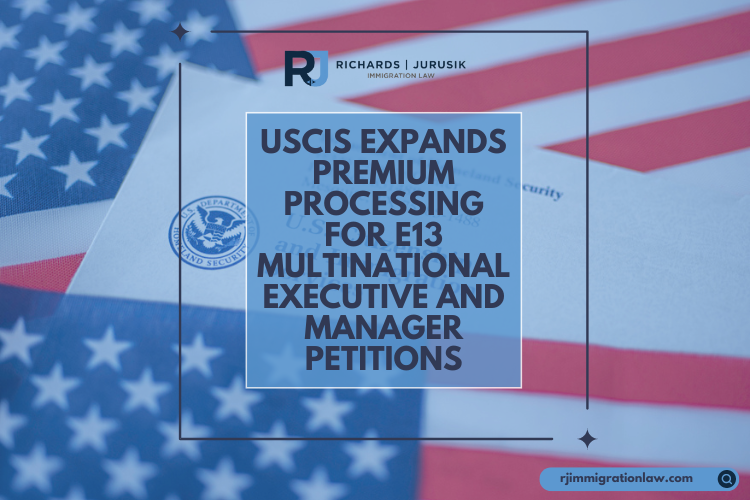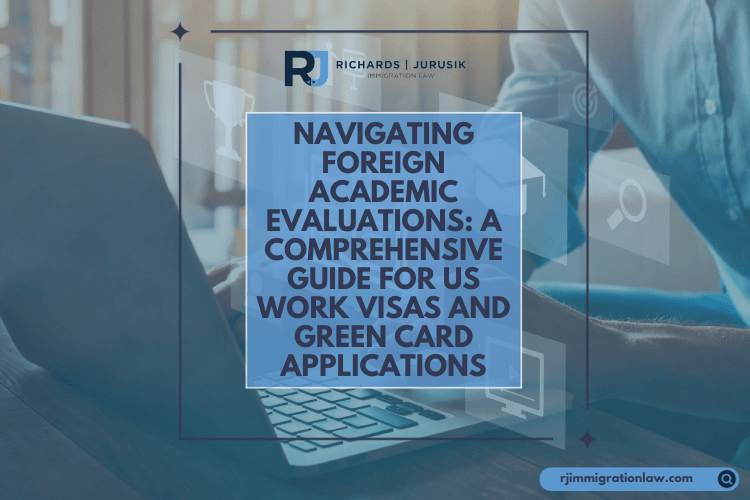There are multiple ways to become a U.S. permanent resident. One pathway toward legal permanent residence that usually raises questions is the EB1C Green Card. This post answers your top 10 questions about EB1C Green Cards, helping you better understand this option.
1. What is an EB1C Green Card?
The EB1C Green Card is a specific category within the first preference employment-based immigrant visa category (EB-1) of U.S. immigration law. It is designed for multinational executives or managers. The main goal of the EB1C program is to allow successful international businesses to bring their proven managers and executives to the United States to continue their high-level work.
2. Who qualifies for an EB1C Green Card?
The EB1C Green Card is designed explicitly for multinational executives or managers. To qualify, the applicant must have been employed outside the U.S. for at least one of the three preceding years by the same employer, firm, corporation, or other legal entity or by its affiliate or subsidiary. The applicant must enter the U.S. to continue rendering services to the same employer, subsidiary, or affiliate in a managerial or executive capacity.
3. What are the benefits of an EB1C Green Card?
The EB1C Green Card offers numerous benefits, the most prominent being the opportunity for multinational executives or managers to live and work permanently in the United States. Importantly, EB1C applicants are not required to undergo the labor certification (PERM) process, which can significantly shorten the application timeline. In addition, family members (spouses and children under 21) of EB1C applicants can also apply for green cards as derivative beneficiaries.
4. What is the process for applying for an EB1C Green Card?
Applying for an EB1C Green Card generally involves two main steps. Firstly, the U.S. employer must file Form I-140, Immigrant Petition for Alien Worker, with USCIS on behalf of the foreign executive or manager. Once the I-140 petition is approved, the foreign executive or manager can then file Form I-485, Application to Register Permanent Residence or Adjust Status if they are currently in the U.S. If they are outside of the U.S., they would go through consular processing for an immigrant visa.
5. How long does it take to process an EB1C Green Card?
The processing time for an EB1C Green Card can vary depending on several factors. These can include the volume of applications USCIS handles at any given time, any backlogs in the specific service center handling the case, and the particular details of the individual case. On average, processing times can range from 8 to 14 months, but this is only a general guideline, and actual processing times can vary.
6. What documents are required for an EB1C Green Card application?
The documents required for an EB1C Green Card application can vary depending on the specific case but generally include the completed Form I-140, proof of the petitioner’s ability to pay the offered wages (such as annual reports, federal tax returns, or audited financial statements), a letter from the employer detailing the job duties and requirements, and evidence of the beneficiary’s employment as a manager or executive for at least one of the three preceding years.
7. Can I include my spouse and children in my EB1C application?
EB1C applicants can include their spouses and children under 21 in their application. Spouses and children can apply for a green card as derivative beneficiaries of the EB1C applicant. They will need to either file Form I-485 to adjust their status if they are currently in the U.S. or go through consular processing for an immigrant visa outside the U.S.
8. What is the difference between EB1A, EB1B, and EB1C Green Cards?
All three categories fall under the first preference employment-based immigration category (EB-1) but cater to different groups. The EB1A category is for individuals with extraordinary ability in the sciences, arts, education, business, or athletics. The EB1B category is for outstanding professors and researchers recognized internationally for their exceptional academic achievements in a particular field. On the other hand, EB1C is for multinational executives and managers.
9. Is there a limit to the number of EB1C Green Cards issued each year?
Yes, there is a limit to the number of EB1C Green Cards that can be issued each year. The total number of employment-based immigrant visas across all categories is capped at 140,000 per year, and the EB-1 category is subject to 28.6% of this limit. The exact number can vary depending on unused family-sponsored visa numbers from the previous year.
10. What happens if my EB1C Green Card application is denied?
If an EB1C Green Card application is denied, USCIS will provide a written notice explaining the reason for the denial. Depending on the grounds for refusal, the applicant might have the opportunity to appeal the decision or file a motion to reopen or reconsider the case. It’s strongly advised to consult with a qualified immigration attorney to understand the best possible course of action in case of denial.
Remember that U.S. immigration law is complex and frequently changes. While this guide aims to provide a comprehensive overview of the EB1C Green Card, it is not a substitute for professional legal advice. Consult with a qualified immigration attorney for advice tailored to your specific situation.







